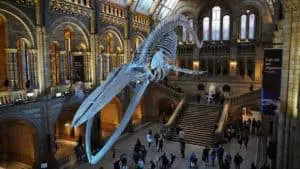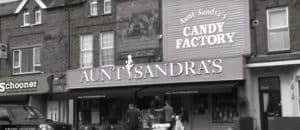Exploring the Rich Tradition of Gaelic Festivals: Samhain, Imbolc, Bealtaine, and Lughnasadh
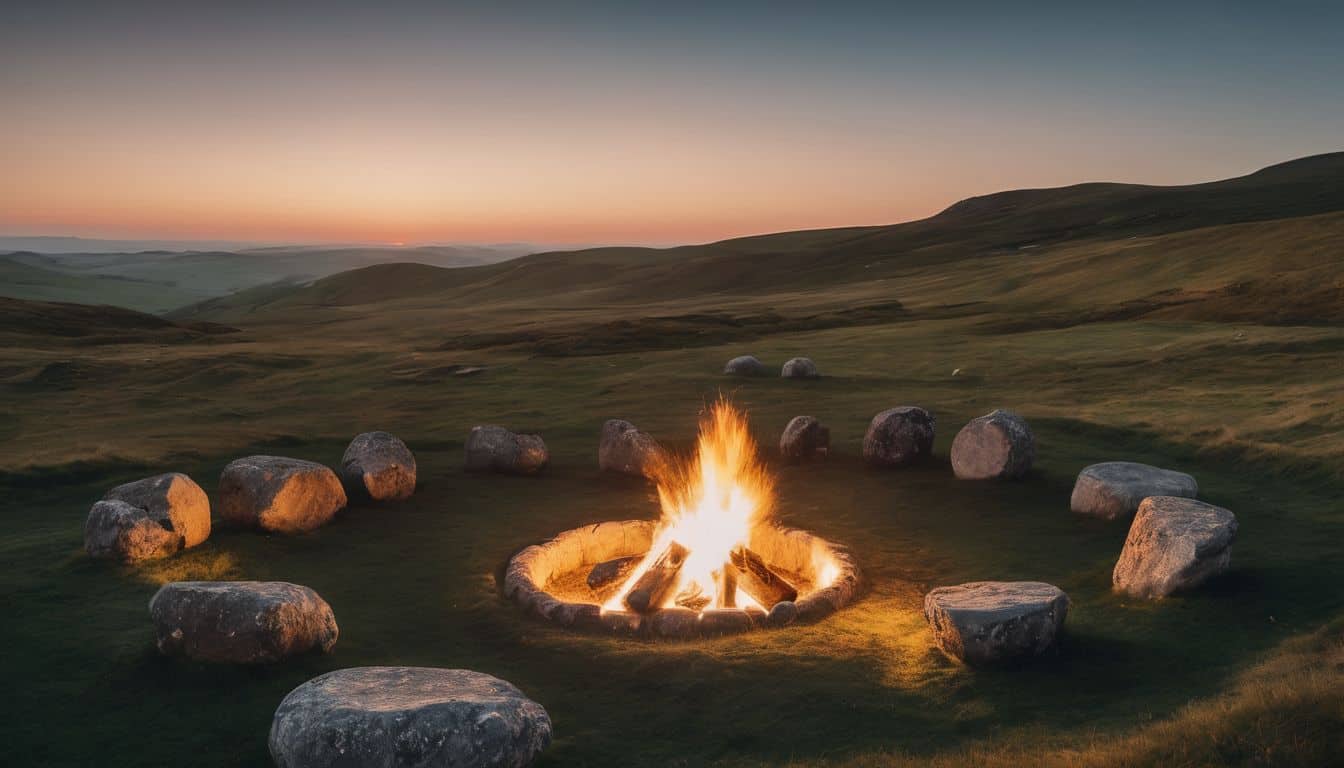
Updated On: April 20, 2024 by Fatma Mohamed
Dive into the enchanting world of Gaelic Festivals, where ancient traditions dance hand in hand with the rhythms of nature. From the mystical Samhain to the vibrant celebrations of Lughnasadh, these festivals paint a rich tapestry of Celtic culture and heritage. Join us on a journey through time as we unravel the mysteries and marvels of Gaelic Festivals: Samhain, Imbolc, Bealtaine, and Lughnasadh.
At the heart of Gaelic Festivals lies a deep reverence for the natural world and its cyclical patterns. Rooted in ancient Celtic spirituality, these festivals mark key moments in the agricultural calendar, honouring the changing seasons with rituals, feasts, and festivities. Samhain, the precursor to modern-day Halloween, heralds the end of the harvest season and the beginning of the Celtic New Year. It’s a time when the veil between the worlds is said to be thin, allowing spirits to roam freely among the living.
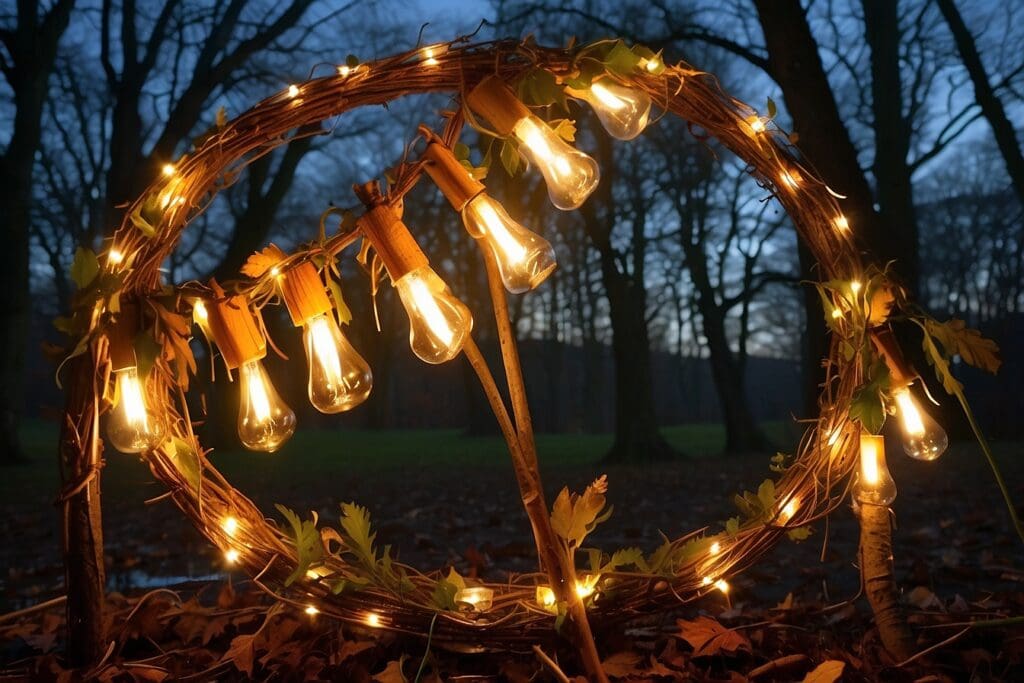
Moving through the wheel of the year, Imbolc emerges as a beacon of hope amidst the winter’s chill. This festival, dedicated to the goddess Brigid, celebrates the stirrings of new life and the promise of spring. As the days lengthen and the land awakens, Bealtaine ignites the flames of summer with its joyous rites and revelry. Then, Lughnasadh arrives, a time of gratitude and abundance, as communities gather to honour the Celtic god Lugh and give thanks for the bountiful harvest. Through the lens of Gaelic Festivals, we glimpse the deep-rooted connection between humanity and the natural world, a bond woven into the very fabric of Celtic tradition.
Table of Contents
The Tradition of Gaelic Festivals
Gaelic festivals, vibrant celebrations steeped in ancient traditions, are a cornerstone of Celtic cultures. These events hold deep significance, connecting communities to their heritage and reflecting the rhythms of nature.
Origins and Significance
Rooted in a pre-Christian past, Gaelic festivals predate written history. They were celebrations of life’s cycles, marking the changing seasons, agricultural milestones, and significant astronomical events. These festivals served as a time for feasting, storytelling, and rituals to propitiate deities and ensure good fortune. Even after the arrival of Christianity, many of these traditions were cleverly woven into new holidays, ensuring their survival for centuries.
The Celtic Wheel of the Year
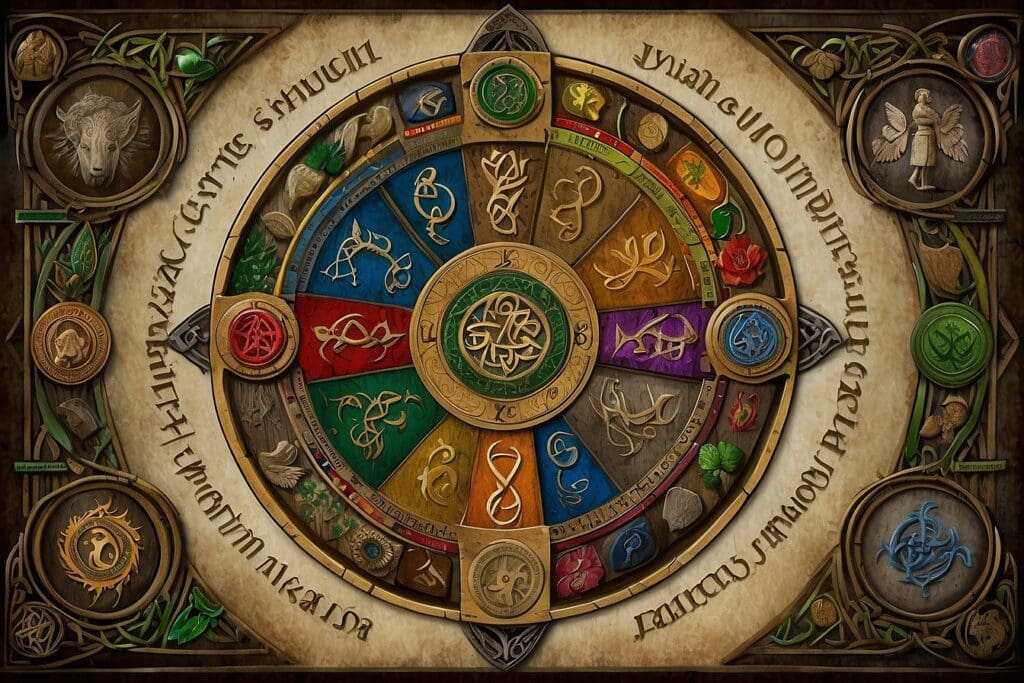
The Celtic Wheel of the Year is a fascinating tool used by Celts to track the seasons and celebrate life’s natural cycles. Divided into eight parts, it emphasizes four major festivals that mark the turning points of the year: Samhain, Imbolc, Beltane, and Lughnasadh.
Festivals in Harmony with Nature
Each of these festivals is intrinsically linked to a specific time of year and boasts its own unique traditions and customs.
- Samhain (October/November): Marking the end of the harvest and the beginning of winter, Samhain is the Celtic festival most familiar to us today through Halloween. It’s a time of reflection, honouring ancestors, and acknowledging the darker half of the year.
- Imbolc (February): As the days begin to lengthen, Imbolc celebrates the arrival of spring and the quickening of life. Purification rituals and preparations for planting are central themes during this festival.
- Beltane (May): A joyous celebration of fertility and the start of summer, Beltane features bonfires lit to symbolize the abundance of the coming season. It’s a time for revelry and connection with the land.
- Lughnasadh (August): Marking the first harvest of grain and fruits, Lughnasadh is a festival of gratitude for the bounty of the earth. Traditional activities include feasting, games, and offerings to deities in appreciation for a successful harvest.
A Legacy of Tradition
The Celtic Wheel of the Year offers a glimpse into the deep respect Celts held for nature. These festivals served not just as celebrations but also as a way to live in harmony with the natural world. While some of the traditional practices have evolved over time, the essence of these festivals continues to be observed across various Gaelic cultures, reminding us of the importance of acknowledging and honouring the cyclical rhythm of life.
Exploring the Major Gaelic Festivals
Samhain is the first major Gaelic festival, celebrated on October 31st to mark the end of harvest season and the beginning of winter.
Samhain
Samhain is one of the four major Celtic festivals celebrated by the ancient Celts. It marks the end of the harvest season and welcomes in winter. Samhain is deeply rooted in the origins of Halloween, with traditions that are still practised today.
In Celtic Ireland, two hills called Tlachtga and Tara were associated with Samhain. Tlachtga was where the Great Fire Festival took place during this time. It was a time to honour ancestors, commune with spirits, and prepare for the colder months ahead.
Today, Samhain continues to be celebrated as a time for reflection, remembrance, and connection to our Celtic heritage.
Imbolc
Imbolc is an important festival in the Celtic year. It marks the beginning of spring and celebrates new life and growth. During this festival, people would light fires to symbolize warmth and hope.
They also made special foods, like bannocks and pancakes, to honour the season of renewal. One famous tradition during Imbolc is Brigid’s Cross, a woven straw symbol that represents protection and blessings.
This festival was a time for communities to come together and celebrate the changing seasons. With music, dancing, and storytelling. Imbolc reminds us of the beauty of nature’s cycles and our connection to the earth.
Bealtaine
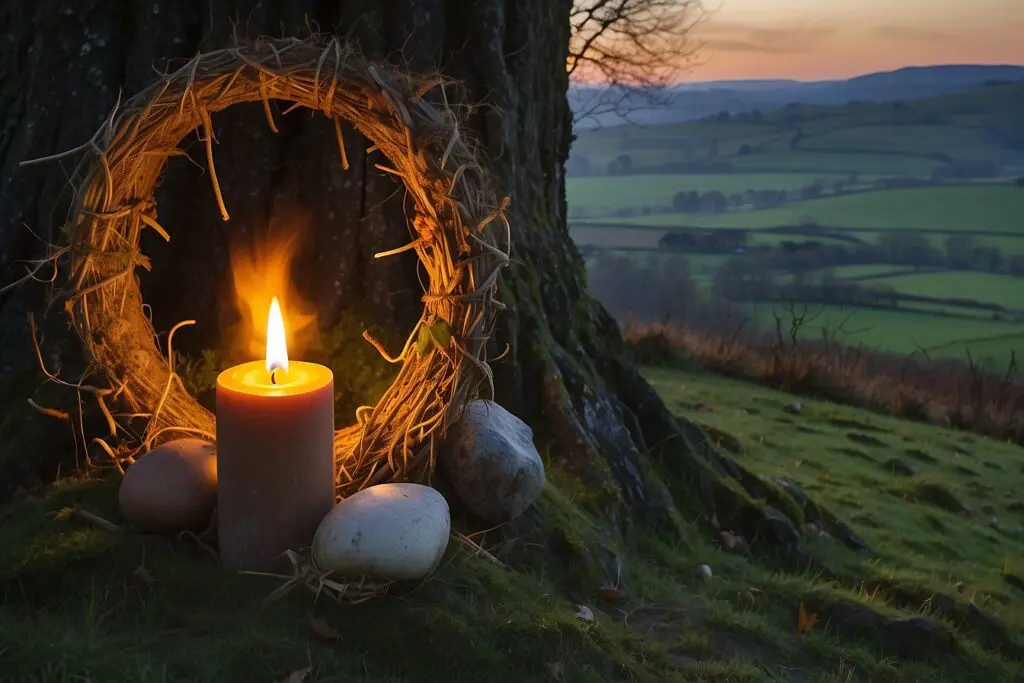
Bealtaine is a vibrant and joyful summer festival in the Celtic calendar. It marks the beginning of the warm season and is celebrated with music, dance, and bonfires. The word “Bealtaine” means “bright fire,” symbolizing the light that overcomes darkness during this time of year.
People come together to honour nature’s abundance by feasting on seasonal foods like fresh fruits and vegetables. It is also a time when communities gather for traditional sports competitions and storytelling sessions filled with myths and legends.
Bealtaine offers a unique opportunity to immerse oneself in Gaelic heritage and experience the rich traditions that have been passed down through generations.
Lughnasadh
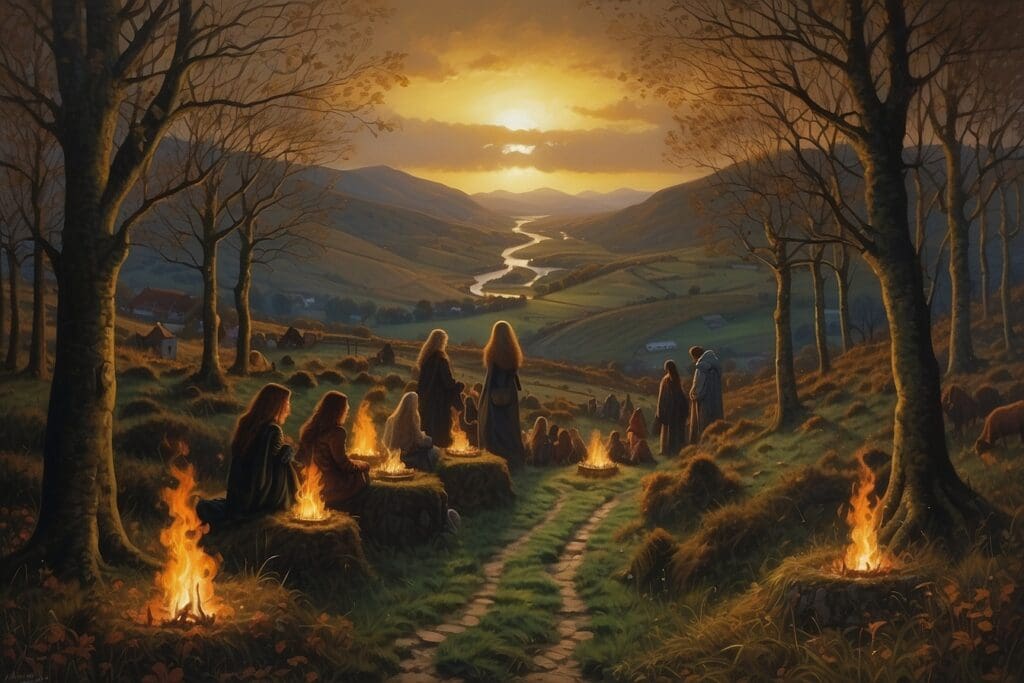
Lughnasadh is one of the four major Celtic festivals celebrated by the ancient Celts. It takes place on August 1st and marks the beginning of the harvest season. During Lughnasadh, people would gather to celebrate and give thanks for the bounty of summer.
The festival was named after the Celtic god Lugh, who was associated with agriculture and skills such as craftsmanship and storytelling. Celebration activities included feasting on freshly harvested fruits and vegetables, singing songs, dancing, and participating in athletic competitions.
Lughnasadh was not only a time to honour nature’s abundance but also an occasion for communities to come together in joyous celebration before the onset of autumn.
Conclusion
The Celtic Wheel of the Year, with its cornerstone festivals of Samhain, Imbolc, Bealtaine, and Lughnasadh, isn’t just a calendar; it’s a vibrant tapestry woven from nature’s rhythms and cultural traditions. Each celebration, bursting with unique customs and rituals, reflects a pivotal point in the agricultural cycle and the changing seasons. From Samhain’s reverence for ancestors during winter’s approach to Lughnasadh’s thanksgiving for the harvest’s bounty, these festivals offer a glimpse into a way of life deeply connected to the earth.
Even today, the Celtic Wheel of the Year holds significance. Observing these ancient traditions allows us to reconnect with our roots, appreciate the cyclical nature of life, and find deeper meaning in the changing seasons. Whether participating in modern-day celebrations or simply reflecting on their rich symbolism, the Gaelic festivals continue to resonate, reminding us of the enduring power of cultural heritage.
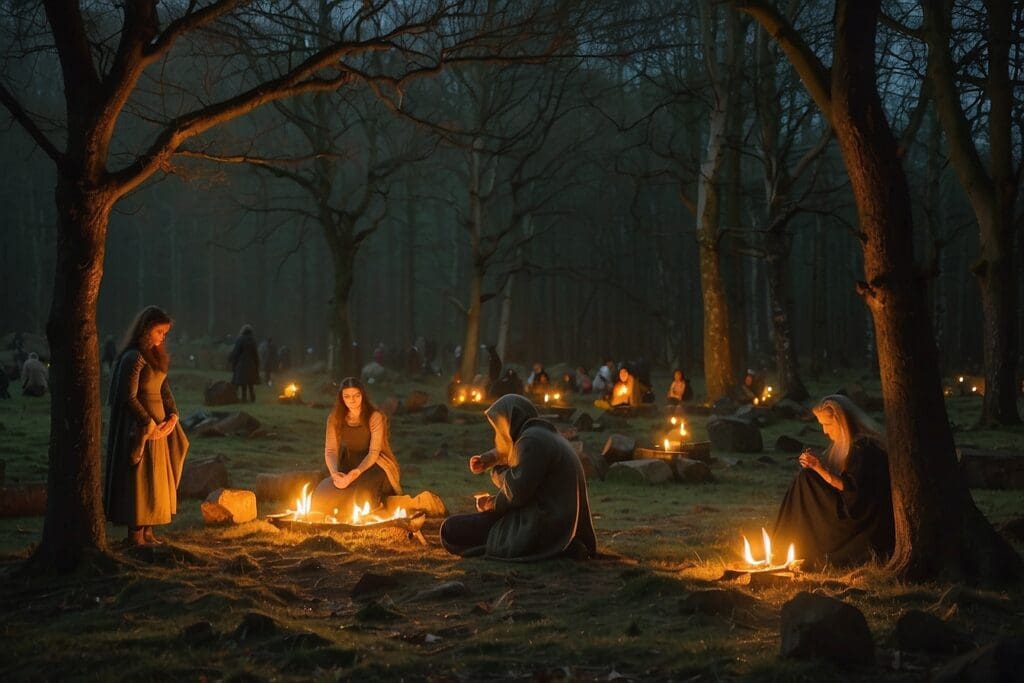
FAQs
1. What are Gaelic festivals like Samhain, Imbolc, Bealtaine and Lughnasadh?
Gaelic festivals such as Samhain, Imbolc, Bealtaine and Lughnasadh are rich Irish traditions that mark seasonal changes like solstices and equinoxes.
2. Are these Gaelic festivals part of a pagan festival?
Yes, these Irish festivals stem from ancient pagan customs that honour the cycles of nature and celebrate harvests.
3. How is Celtic music involved in these celebrations?
Celtic music plays an important role at these festivals; it helps to express Celtic spirituality and bring mythology legends to life.
4. Is there a link between Celtic art and these traditional events?
Definitely! These special days offer chances to see lively forms of Celtic art used in many ways as part of celebrating the seasons.
5. Has modernity affected the Gaelic Festivals?
While they have evolved over time, much effort has been made to keep alive key pieces of their past. This includes respecting each season’s unique traits through specific festivities.


